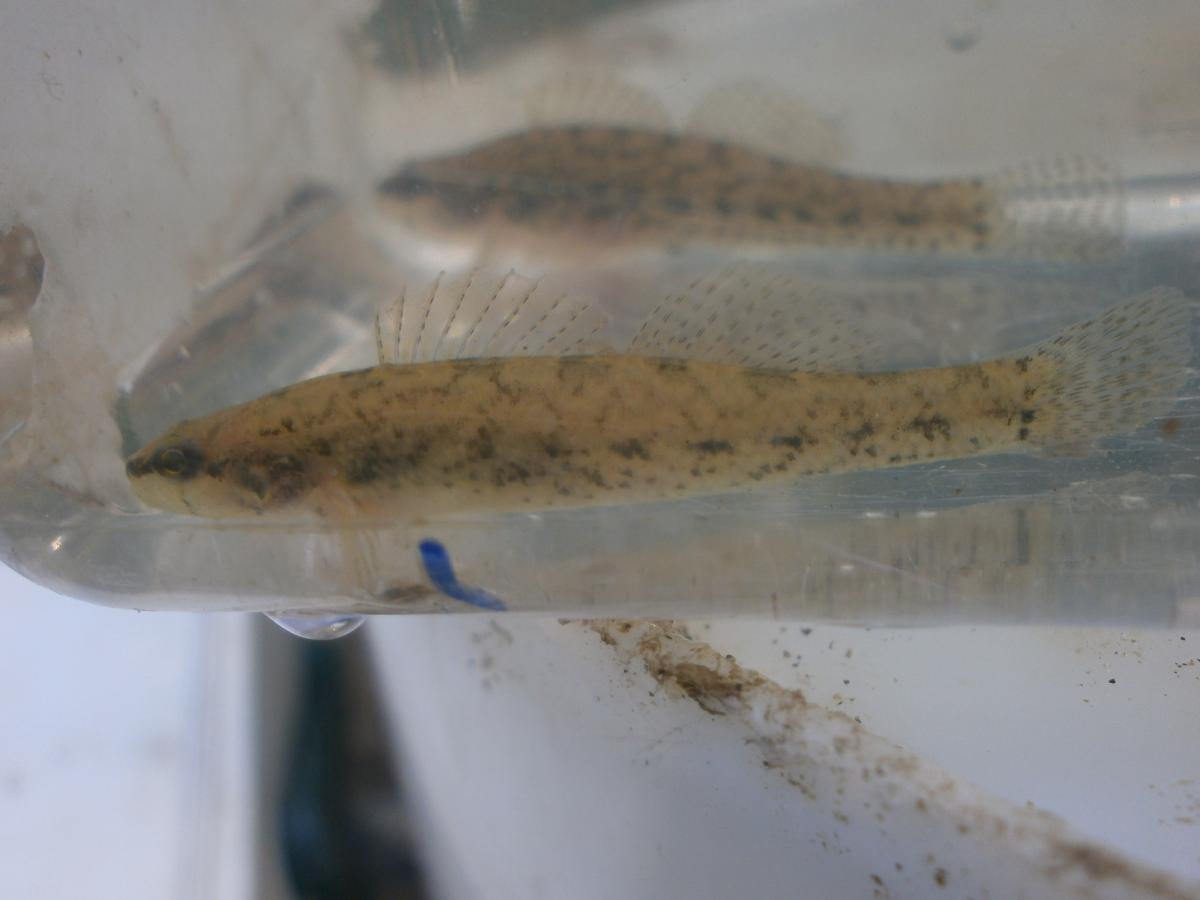
Immediately upstream of the crossing is a pool about 35' or so long. There was a surprisingly deep channel through it, given the pool's modest size and water flow. Turned up a largemouth bass, three creek chubsuckers, some sunfish, and a young adult bullfrog. And a modest population of Eastern gambusia.






I wonder how large that bass might grow. It still looks pretty young, but since the creek was dried up to the point up (until maybe last year) where he couldn't have swum upstream over the road, I'm guessing its parents are somewhere close by. Downed tree branches and very slightly undercut banks provided in-stream cover. The bottom was either clay or small gravel.
Downstream from the crossing it is a whole different environment. The downstream side of the road crossing acts as a tailrace of sorts. Immediately off the crossing the water moves (relatively) quickly. It was the only place I could see a current without having to toss in a blade of grass. Below the outflow, there was an algae occupied tongue of gravel/rock/silt. There are a couple shallow pools, but mostly it is shallow flowing water. Dominant cover was emergent plant life. Any guesses on the one with the spear shaped leaves?






The dipnetting was good here, too. The plants grew almost a foot out into the "tailrace". From the grass and other plants in the current I pulled two Carolina darters (Etheostoma collis) and six yellow bullheads (Ameiurus natalis) in just four or five passes of the net! Too bad bullheads grow up to be such brutes, they're cute little buggers when they're little! In a shallow pool below the tailrace I caught two more E. collis and a bullfrog tad.





So there you have it. The write up is bigger than the stream. Nothing fancy, but it was still fun to get out and to have something to share!











